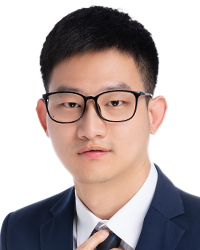Since the promulgation of the Interpretation of the Supreme People’s Court on the Application of Punitive Damages in the Trial of Intellectual Property Infringement Civil Cases on 3 March 2021, practice has produced further refinements.
These refinements have touched on aspects such as the conditions for application, criteria for determining wilful infringement and serious circumstances, the base and the multiple for damages.
The interpretation has undoubtedly given a more enriched practical guidance, but still leaves details to be clarified.
Unspecified details

Senior Partner
Ronly & Tenwen Partners
Tel: +86 138 1664 4779
E-mail: lishujuan@rtlawyer.com.cn
The time point for claiming punitive damages needs to be further clarified. According to article 2 of the interpretation, a plaintiff’s claim for punitive damages should be made at the time of filing the lawsuit.
The term “time of filing the lawsuit” lacks clarity within civil litigation procedures, and its interpretation varies among different courts. For example, the author has encountered a case where the court directly refused to apply punitive damages on the ground that the claim was not explicitly made “before the first trial starts”.
Meanwhile, decision guidelines from some provincial high people’s courts state that the latest time of filing the lawsuit is before the conclusion of the first trial. As such, the Supreme People’s Court is advised to provide further clarification on this timing issue in subsequent revisions.
The enumeration of wilful and serious circumstances needs to be further added to. The interpretation lists five wilful circumstances and a catch-all clause under article 3.
Drawing from precedents where punitive damages were applied, the author suggests that directly wilful circumstances of a defendant should also include circumstances where the defendant applies for the same or similar IP rights as the plaintiff, and where the plaintiff has direct contact with the defendant in administrative confirmation and authorisation procedures and litigation of IP rights, as well as where the relevant administrative ruling or judgment has clearly informed that IP rights of the defendant are obviously illegal. These circumstances directly prove the defendant’s wilful infringement.

Partner
Ronly & Tenwen Partners
Tel: +86 180 0178 9701
E-mail: mayuntao@rtlawyer.com.cn
For the determination of serious circumstances, article 4 of the interpretation considers the behaviour of the infringer in the lawsuit and other factors. The author suggests that the consideration should not be limited to the current case between the plaintiff and the defendant, but also other cases related to them. The interpretation has already listed repeated infringements, and the author proposes that the infringement by the defendant’s affiliates may also be appropriately included in this scope.
Moreover, the defendant’s abuse of litigation rights after maliciously registering trademarks should be considered in the assessment of serious circumstances. In conclusion, the interpretation should provide a more detailed list of wilful and serious circumstances to better guide courts at all levels and prevent ambiguities in the catch-all clause from affecting its application.
The calculation method of punitive damages should be refined. The calculation has been the most troublesome matter in judicial practice, and also the core issue of whether punitive damages can be applied.
In the author’s practice, different courts may have various calculation methods and refuse to adopt the author’s claim on various grounds. To solve this problem, the Supreme People’s Court should, adhering to the scientific principle of calculation, appoint several calculation methods for the courts and right holders to apply, rather than relying on their own understandings to use various calculation methods.
For example, in terms of infringement profits, the author has learned that some courts base their calculations on gross profit margins, net profit margins, average gross profit margins and reference gross profit margins, while others also consider trademark contribution rate and technology contribution rate.
These judicial practices bring about many problems in subsequent cases, as judges can have their own calculation methods, making it difficult for punitive damages cases to receive clear guidance. This leaves the parties not knowing how to choose a calculation method, or choosing unapplicable methods.
Lack of reference for the multiple of punitive damages. Article 6 of the interpretation provides that a defendant’s degree of subjective fault and seriousness of the infringement and other factors should be considered when determining the multiple.
This provision does not have a guiding significance for courts. Reference factors ranging from one to five times should be further refined; otherwise, courts may exercise broad discretion, leading to arbitrary and subjective determination of the multiples. Some courts have quantified reference factors for the multiple, which is undoubtedly a good attempt but, ultimately, the Supreme People’s Court still needs to summarise the useful practices of courts and form a set of effective guidance.
Conclusion
The core of the punitive damages system for IP rights lies in applicable conditions and calculation methods. Detailed rules and unified standards are essential to facilitate the widespread application of punitive damages. The clearer the interpretation is, the better it will be to prevent the abuse of the system. Therefore, refinement of the rules is not only conducive to the promotion of a good system, but can also prevent the abuse of rights.
It is hoped that the Supreme People’s Court will subsequently introduce a more detailed punitive damages system for IP rights to solve these practical problems.
Li Shujuan is a senior partner at Ronly & Tenwen Partners. She can be contacted at
+86 138 1664 4779 or by e-mail at lishujuan@rtlawyer.com.cn
Ma Yuntao is a partner at Ronly & Tenwen Partners. He can be contacted at
+86 180 0178 9701 or by e-mail at mayuntao@rtlawyer.com.cn





















